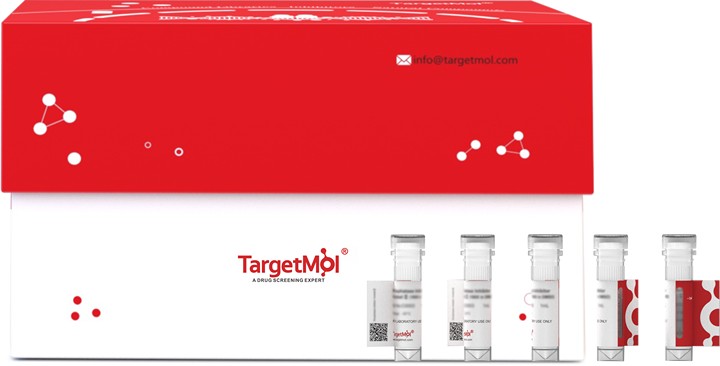Shopping Cart
- Remove All
 Your shopping cart is currently empty
Your shopping cart is currently empty

PD-L1 Protein, Human, Recombinant (His), AF647-Labeled is expressed in HEK293 Cells. The accession number is Q9NZQ7-1.

| Pack Size | Price | Availability | Quantity |
|---|---|---|---|
| 25 μg | $539 | Backorder | |
| 100 μg | $1,730 | Backorder |
| Biological Activity | Flow cytometric analysis of anti-PD-L1 CAR expression. 293 cells were lentivirally transduced with anti-PD-L1 CAR. Flow cytometric analysis was performed with a negative control protein and PD-L1 Protein, Human, Recombinant (His), AF647-Labeled (Cat#TMPY-07000), respectively. Non-transduced 293 cells were used as a control (left). |
| Description | PD-L1 Protein, Human, Recombinant (His), AF647-Labeled is expressed in HEK293 Cells. The accession number is Q9NZQ7-1. |
| Species | Human |
| Expression System | HEK293 Cells |
| Tag | C-His |
| Accession Number | Q9NZQ7-1 |
| Synonyms | PD-L1,PDL1,PDCD1LG1,PDCD1L1,hPD-L1,B7-H1,B7H1,B7-H |
| Construction | A DNA sequence encoding the extracellular domain (Met 1-Thr 239) of human PD-L1(NP_054862.1) was expressed with a C-terminal polyhistidine tag. The protein is site-specifically conjugated with AF 647 (Excitation = 655 nm, Emission Max.= 680 nm). |
| Protein Purity | ≥ 90% as determined by SDS-PAGE. |
| Molecular Weight | 31 kDa (predicted) |
| Endotoxin | < 1.0 EU per μg protein as determined by the LAL method. |
| Formulation | This product is Lyophilized from sterile PBS, 5% Trehalose, 5% Mannitol, pH 7.4. Please contact us for any concerns or special requirements. Please refer to the specific buffer information in the hardcopy of datasheet or the lot-specific COA. |
| Reconstitution | Please refer to the lot-specific COA. |
| Shipping | In general, Lyophilized powders are shipping with blue ice. |
| Research Background | Programmed death-1 ligand-1 (PD-L1, CD274, B7-H1) has been identified as the ligand for the immunoinhibitory receptor programmed death-1(PD1/PDCD1) and has been demonstrated to play a role in the regulation of immune responses and peripheral tolerance. PD-L1/B7-H1 is a member of the growing B7 family of immune molecules and this protein contains one V-like and one C-like Ig domain within the extracellular domain, and together with PD-L2, are two ligands for PD1 which belongs to the CD28/CTLA4 family expressed on activated lymphoid cells. By binding to PD1 on activated T-cells and B-cells, PD-L1 may inhibit ongoing T-cell responses by inducing apoptosis and arresting cell-cycle progression. Accordingly, it leads to growth of immunogenic tumor growth by increasing apoptosis of antigen specific T cells and may contribute to immune evasion by cancers. PD-L1 thus is regarded as promising therapeutic target for human autoimmune disease and malignant cancers.Cancer ImmunotherapyCo-inhibitory Immune Checkpoint TargetsImmune CheckpointImmune Checkpoint Blockade: Blocking AntibodiImmune Checkpoint Blockade: PD-L1 / B7-H1 / CImmune Checkpoint Detection: AntibodiesImmune Checkpoint Detection: ELISA AntibodiesImmune Checkpoint Detection: FCM AntibodiesImmune Checkpoint Detection: ICC AntibodiesImmune Checkpoint Detection: IHC AntibodiesImmune Checkpoint Detection: WB AntibodiesImmune Checkpoint ProteinsImmune Checkpoint TargetsImmunotherapyPD-L1 / B7-H1 / CD274 Immune Checkpoint ProteTargeted Therapy |

Copyright © 2015-2025 TargetMol Chemicals Inc. All Rights Reserved.